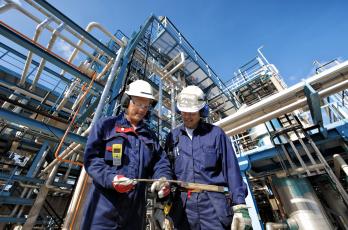Question 6: The use of infrared pyrometers for monitoring tube temperatures in steam reformers is a well known practice. What is your recommended frequency for use of these devices ( how many times per week)? Can you offer any recommended alternate devices or methods available such as fixed infrared pyrometer skin thermocouples or infrared imaging?
CITGO’s operating philosophy is to monitor our tubes with an optical pyrometer every shift. We monitor the tubes from multiple locations on each level of our terraced wall furnace. This method has been extremely effective in extending the life of the furnace tubes and catalyst.

